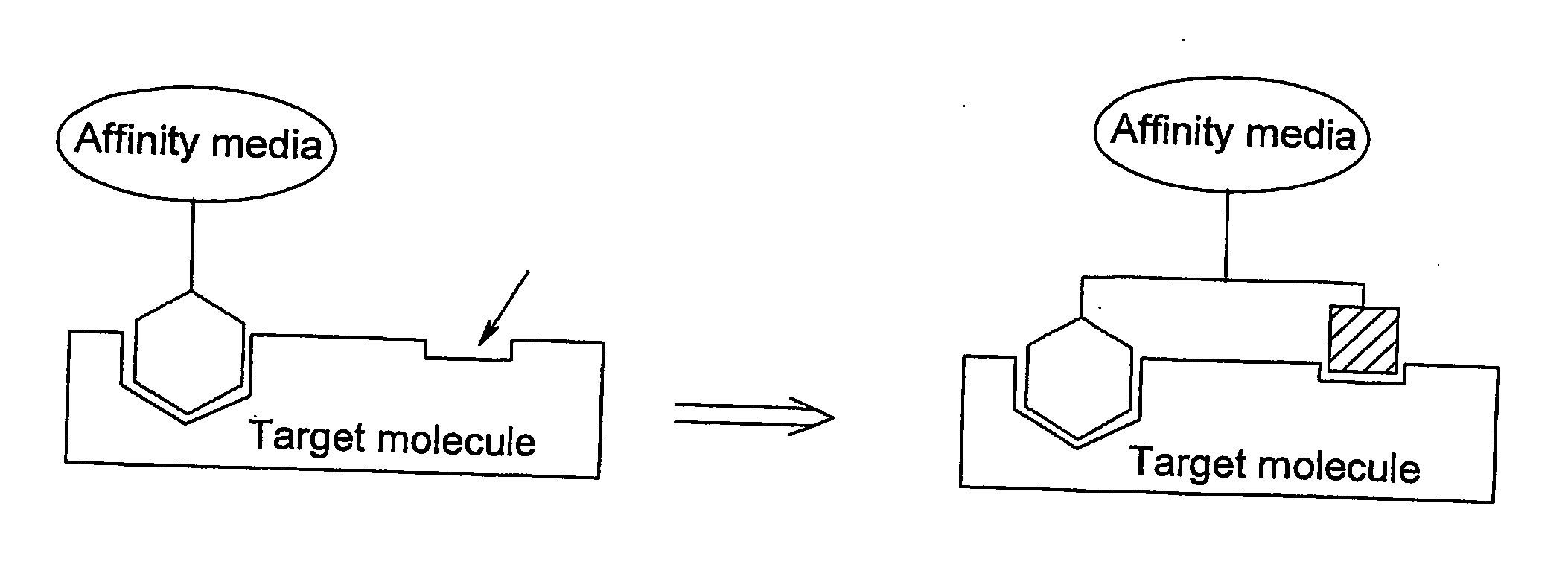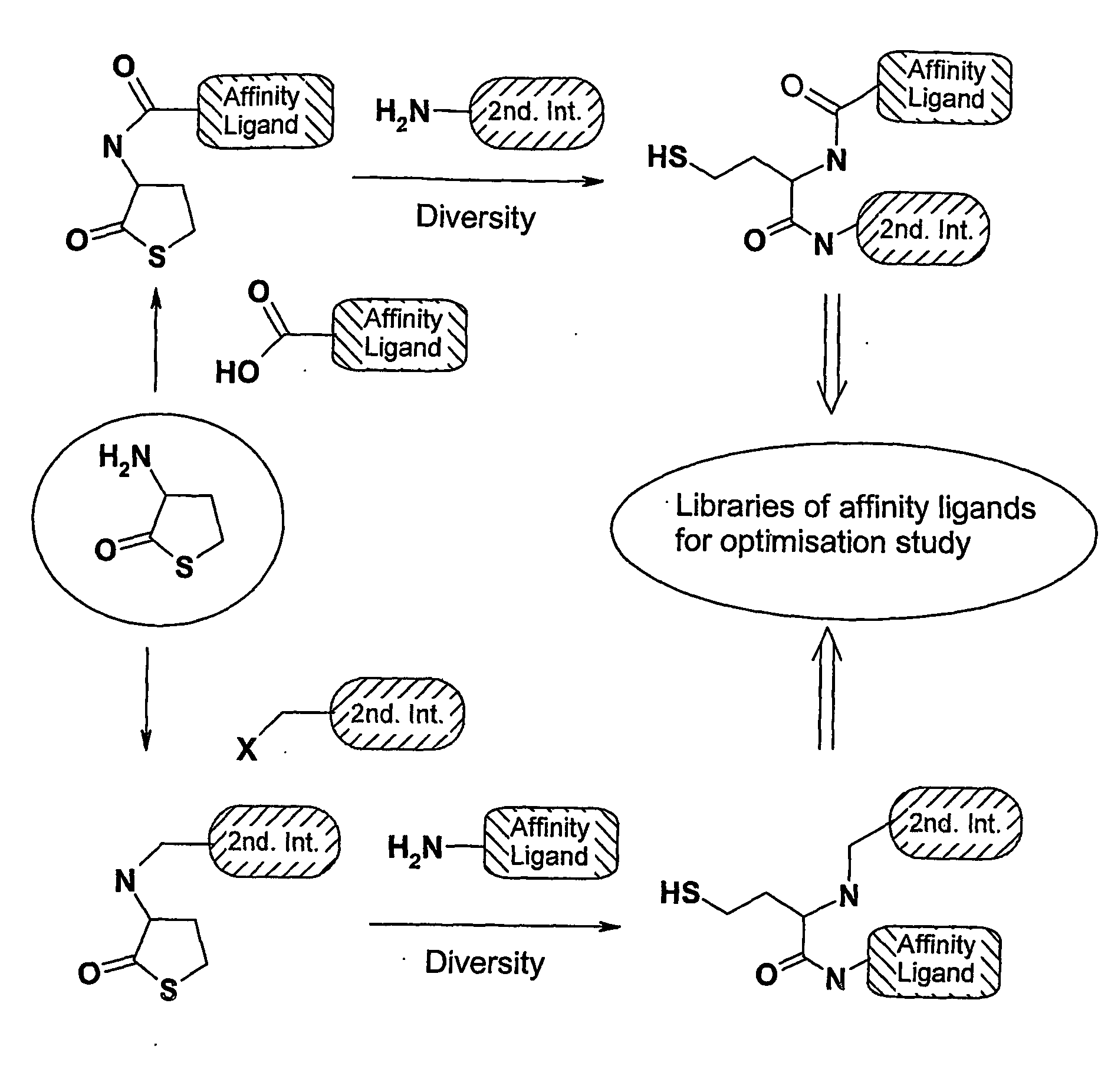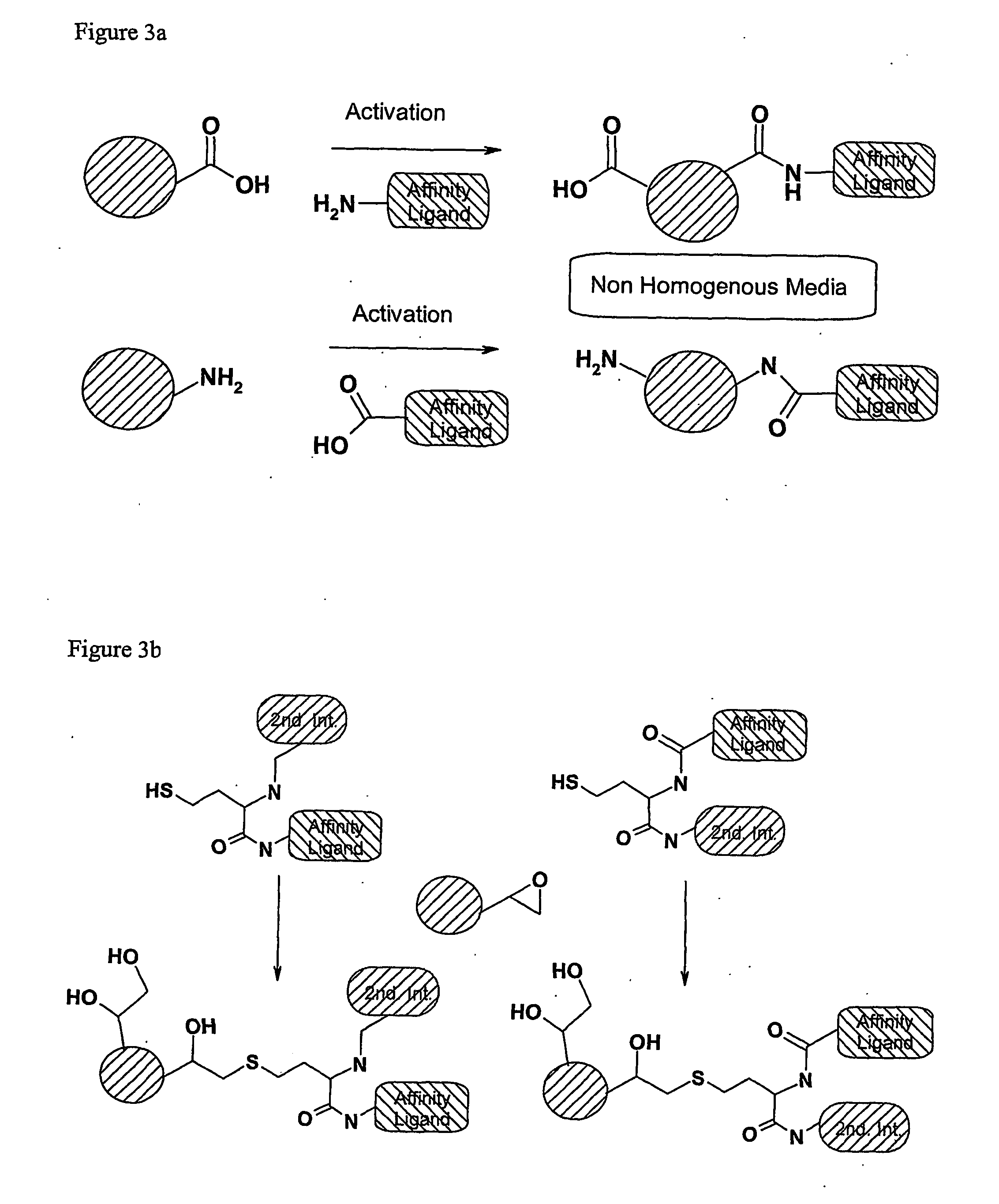Method of preparing affinity ligands
a technology of affinity ligands and amine derivatisation supports, which is applied in the field of affinity ligand preparation, can solve the problems of poor homogeneity of side products and media, and the immobilisation of ester-activated ligands to amine-derivatised supports is never fully complete, and achieves the effect of easy immobilisation to a base matrix
- Summary
- Abstract
- Description
- Claims
- Application Information
AI Technical Summary
Benefits of technology
Problems solved by technology
Method used
Image
Examples
examples 1-9
[0061] In the following example 1R1 is a 2-naphtalenesulfonyl moiety described by Kohler et al. as having affinity for Bovine Serum Albumine (BSA) [Koehler, Michael F. T. et al., Bio. Med. Chem. Letters, 2002, 12, 2883-2886]. The following example is using D,L-homocysteine thiolactone Ia as a scaffold and the described chemistry (cf. Scheme 1 above). After formation of the sulfonamide bound by reacting homocysteine thiolactone Ia with 2-naphtalensulfonyl chloride, the opening of the thiolactone ring is realised with an amine and the resulting compound further coupled to an epoxy-activated Sepharose™ 6 Fast Flow.
example 1
[0062] Step 1: 6.8 g (44.1 mmol) of D,L-homocysteine thiolactone hydrochloride were dissolved in 100 ml of DCM and 16.1 ml (92.6 mmol) of DIPEA and cooled down to 0° C. To this solution, 10.0 g (44.1 mmol) of 2-naphtalenesulfonyl chloride in 50 ml DCM were added slowly at room temperature according to Step 1 and the reaction mixture stirred for another 16 h. The solvent was removed under vacuum and ethyl acetate (300 ml) was added. The organic phase was washed with citric acid (10% in water w / w) (2×100 ml). The organic phase was dried with sodium sulfate before evaporation and 13.1 g of a white powder recovered. Yield: 96%.
[0063] Step 2: 260 mg (0.70 mmol) of product issued from Step 1 was dissolved in 6 ml of THF. To this degassed solution (10 min bubbling of nitrogen), 0.334 ml (3.4 mmol) of n-butylamine was added and the mixture stirred at room temperature for 16 h. The solvent removed, the crude material was dissolved in 1 ml methanol and purified by Reverse phase HPLC using a ...
example 2
[0065] Step 1: A solution of benzoyl chloride (0.87 ml, 7.5 mmol) in 5 ml DCM was added dropwise to a solution of D,L-homocysteine thiolactone (1.15 g, 7.5 mmol) and DIPEA (2.6 ml, 15 mmol) in dichloromethane (DCM, 15 ml) at 0° C. The mixture was stirred overnight at room temperature. The solvent was evaporated under vacuum and the reaction residue was extracted with ethyl acetate (30 ml). The organic phase was washed with aq. citric acid 10% (w / w, 20 ml), aq. K2CO3 10% (20 ml), water (20 ml), and dried with sodium sulphate. After filtration, the solvent is removed yielding a white solid (1.37 g, 83%).
[0066] Step 2: Aniline (3.125 ml, 34.67 mmol) and the above compound (750 mg g, 3.39 mmol) were mixed and stirred at 100° C. under nitrogen atmosphere. The reaction was monitored by LC-MS and after 6 h the mixture was allowed to cool to room temperature. The crude product was purified by flash chromatography using EtOAc and cyclohexane (1:2) as starting mobile phase yielding a light p...
PUM
 Login to View More
Login to View More Abstract
Description
Claims
Application Information
 Login to View More
Login to View More - Generate Ideas
- Intellectual Property
- Life Sciences
- Materials
- Tech Scout
- Unparalleled Data Quality
- Higher Quality Content
- 60% Fewer Hallucinations
Browse by: Latest US Patents, China's latest patents, Technical Efficacy Thesaurus, Application Domain, Technology Topic, Popular Technical Reports.
© 2025 PatSnap. All rights reserved.Legal|Privacy policy|Modern Slavery Act Transparency Statement|Sitemap|About US| Contact US: help@patsnap.com



